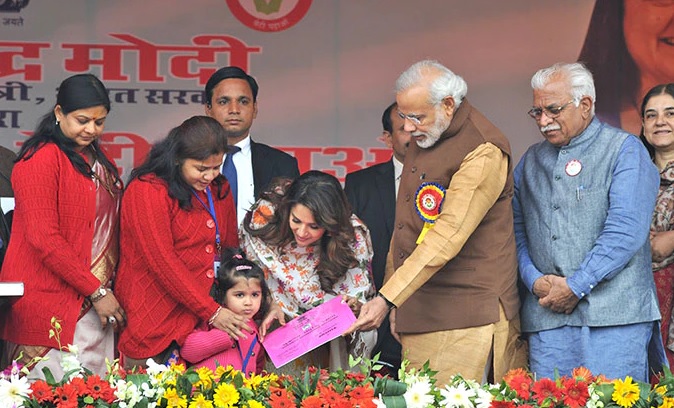
The initiative Beti Bachao Beti Padhao (BBBP), introduced by Prime Minister Narendra Modi on 22 February 2015, sought to increase the ratio of girl new-borns relative to boy infants and ensure that girls become socially and financially independent. When the initiative was advertised on social media in 2015 with the hashtag #SelfieWithDaughter, it received widespread appreciation.
The main objective of the social movement is to provide every girl in India with a suitable education and opportunities. Since 1961, there have been fewer girls than boys aged 0 to 6 years old, or what is known as the Child Sex Ratio (CSR). As an illustration, the ratio further decreased to 918 in 2011 from 945 in 1991. The states of Uttar Pradesh, Uttrakhand, Haryana, Punjab, Delhi, and Bihar are the key targets of the programme.
The scheme’s primary focus was on 100 districts, with at least one district in each of the states and union territories included in the 2011 census, based on the low CSR ratio. The programme’s national brand spokesperson is the Bollywood actress Madhuri Dixit, whereas Olympic bronze medallist Sakshi Malik was appointed the BBBP brand ambassador for Haryana in August 2016.
There are various factors contributing to the falling trend in the CSR ratio, including rising female femicide, an increase in crime against women, and social ills such as child marriage and dowry. Thus, the need to launch the programme was to enhance the welfare of women in Indian society and raise public awareness was urgent. The main goals of this program were to stop gender bias, secure female children’s survival and protection, and provide them with an education. The programme advances the goal of giving every girl child in the country access to equal opportunities, a healthy lifestyle, education, and financial empowerment in all spheres of life. Education for a girl now is the same as education for the entire family and subsequent generations. A girl with a good education can build a selfsufficient future for both her and the nation.
According to reports in the mainstream media, there are more occurrences of female foeticide and crimes against women than ever before because of the unfavourable stereotype that girls are less valuable than their male counterparts and a burden to their families. The program’s main goal is to encourage Indian residents to give their girl children and female family members opportunities, a decent education, good food, and safety.
Both triumphs and failures are related to the scheme. Some of its highlights include the fact that the programme is a thoughtful initiative with specific goals to empower girls. It began at the grassroots level and first concentrated on those regions where CSR was at a crisis point and there were no facilities for the education of girl children. The proper release or allocation of cash and scheme monitoring were mostly to blame for its failings. The tri-ministerial convergence programme has been amended and expanded to include many ministers in order to further enhance it, according to the Union Ministry on Women and Child Development. Some of the additional objectives were a 1% increase in the number of girls enrolled in secondary education, skill development for girls, promoting the abolition of child marriage, and boosting awareness about safe menstrual hygiene.
To honour the International Day of the Girl Child, an updated and extended version of the BBBP programme was unveiled on 22 October 2022. The government is also making a strong effort to support the programme by offering financial aid for a girl child’s education and marriage. Though there is a long way to go, let’s all focus on the positive and hope that the actions taken today will ultimately help to define the bright future of girls in the civilised and well-educated Indian society around the world.
Harminder Pal Singh is a professor at Department of Environment Science of Punjab University in Chandigarh.